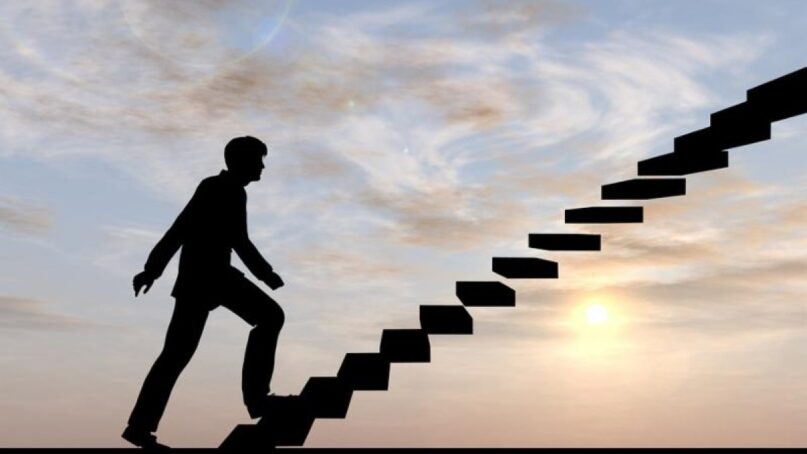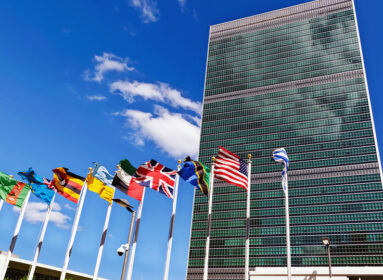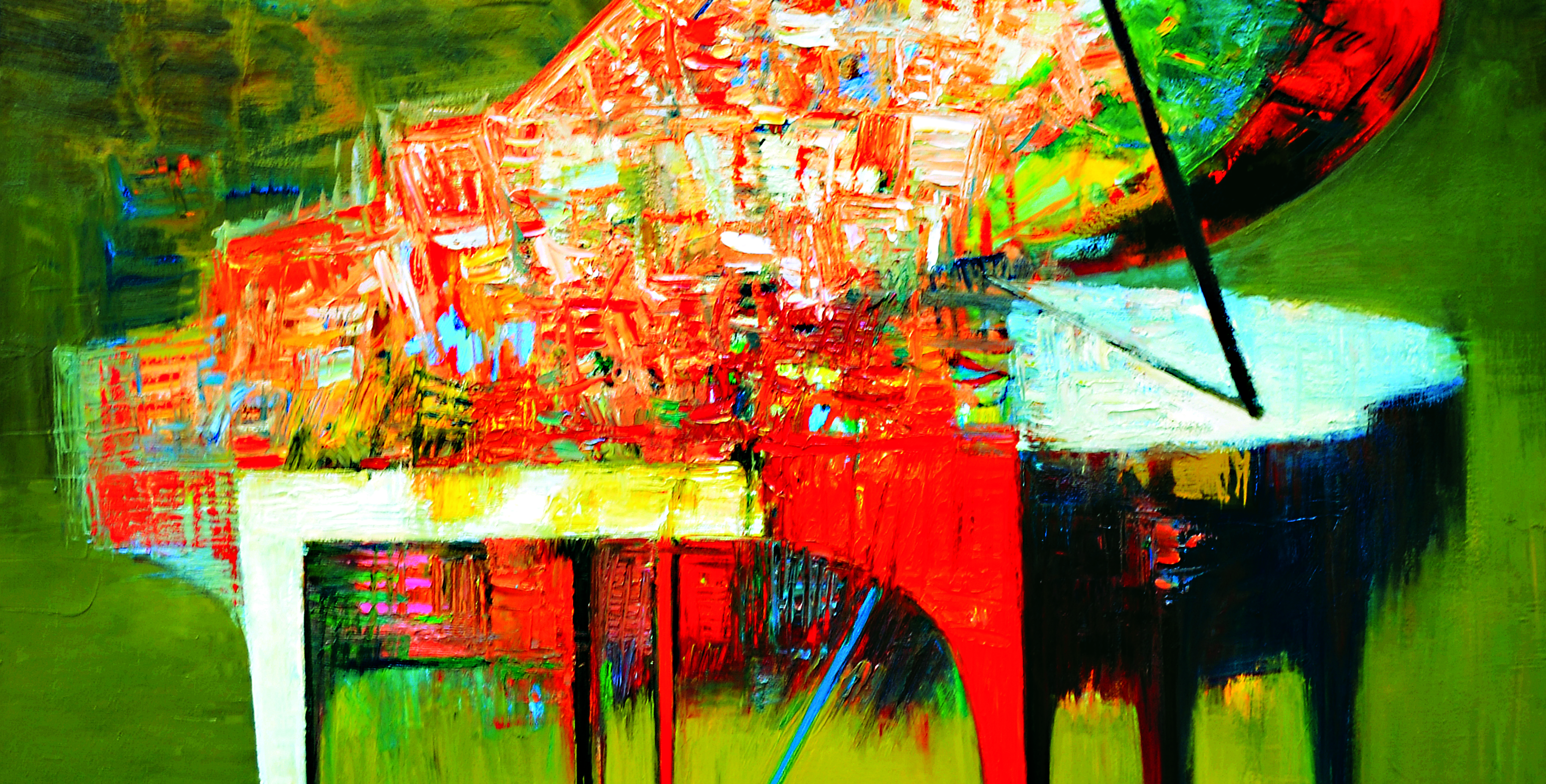
By Rabbi Shmuel Reichman
The second Daniel woke up, he knew something was wrong. He felt perfectly fine, but he had no memory of who he was. After searching his house, the only useful thing he could find was a book that he seemed to have written. It contained a list of instructions, explaining his life’s story and how he suffers from a form of amnesia, sometimes forgetting who he is. He had written this book as a guide for him in these situations.
As he continues reading through the book, he realizes that it also includes a detailed philosophy of life, a deep spiritual perspective of the world, and an emphasis on living with a mission-centered focus. The book instructs him to seek out a specific mentor, and when he does so, the mentor takes Daniel under his wing and agrees to teach him the true path to greatness. Daniel has an incredible desire to grow and improve, and although he finds the learning difficult, he enjoys the challenge.
As Daniel goes through life, he faces a number of challenges: financial difficulties, relationship struggles, and some health battles. However, the principles in the book and his mentor’s guidance help prepare Daniel for these challenges. He faces each one head-on, always battling through and never giving up. Most of all, they help Daniel deal with his arch-nemesis, Aaron. It appeared as though Aaron’s mission in life was to crush Daniel’s dreams and thwart his every goal. For every step forward Daniel takes, Aaron is always there to challenge him, attempting to push him two steps back. But Daniel never gives up, always managing to push past his challenges. Even when Daniel has a minor setback, he always manages to pick himself back up, re-harness his willpower, and keep pushing forward.
After a lifetime of growing, learning, and contributing to the world, Daniel is now a nearly perfect being. One day, just after waking up, the entire world disappears from under him and Daniel finds himself in another dimension, standing face to face with…himself.
“I’m sure you are confused” the other Daniel says, “but I will explain everything. I am the real Daniel, or at the very least, the original Daniel. I was created perfect. Everything in my life was easy, clear, and perfect. But at the end of my life, I felt that something was missing. I suddenly realized that I didn’t want to be perfect, I wanted to become perfect. I therefore devised a plan.
“I created a younger version of myself without any memory of who he was. I then created a perfect arch-nemesis who would challenge him, thereby pushing him to grow. This arch-nemesis would develop along with him, continuing to counter and challenge him as he evolved and grew. But I did not leave Daniel to fend for himself; I created a book of instructions that would guide Daniel back to perfection.
“You, Daniel, are a part of me. Therefore, through your journey, a part of me gets to experience the process of becoming perfect.
“You have just finished your journey; you have reached a perfect state. Now, you get to enjoy the perfection you’ve built.”
A New Year
The birth of a new year is a time of reflection and resolution; a time when hope and inspiration fill the air. We dream about what this upcoming year holds in store; how we can make the rest of our life the best of our life. We all have ideas, ambitions, and aspirations that we yearn to bring to fruition, and the new year gives us “permission” to revisit these goals and breathe new life into them. For a brief moment, everything is crystal clear; we see our purpose and our path with vivid clarity. However, there is an underlying frustration that accompanies this time period as well. If we reflect honestly, we often realize that our new year’s resolutions are awfully similar to those of last year, and the year before, and the year before…
We have brief moments of inspiration, but they soon fade into oblivion, only to be resuscitated for a few more days the next year in the hopes that somehow this year might be different. However, there is another option — a way to actually make this year different. By truly understanding this time of year and fully tapping into its powerful themes, we can turn what was previously fleeting inspiration into lasting, eternal change.
The Deeper Themes of Teshuvah
Elul and Rosh Hashanah center around the concept of teshuvah, and Parashas Nitzavim is clearly linked to this theme as well. The pesukim in Nitzavim discuss the theme of teshuvah, the importance of choosing life — choosing what is right and connecting ourselves back to Hashem (see the first pesukim of perek 30 in Sefer Devarim). As Parashas Nitzavim is connected to the transition from Elul into Rosh Hashanah, let us delve deeper into the concept of teshuvah.
Teshuvah literally means “return,” but whom, or perhaps what, are we returning to? The Gemara (Kiddushin 39b) explains that Hashem created teshuvah before creating the world itself. What is the meaning of this enigmatic statement, and what lessons and implications does it have for us as we proceed through the teshuvah process?
The Practical Form of Teshuvah
The Rambam (Rambam, Mishneh Torah, Teshuvah 1:1) discusses the three-step process of teshuvah:
- First, one must reflect on their past and acknowledge that a problem exists.
- One must then transition into the present and strongly feel the pain of their mistake, regretting it wholeheartedly.
Finally, one must look toward the future and resolve to never again commit this same mistake.
This three-step guide is the practical process of teshuvah. However, there is a deeper essence of teshuvah that is the foundation for these three steps, and understanding this deeper essence is the key to truly transforming ourselves through these three steps.
True Teshuvah: Returning to Your Higher Self
Genuine teshuvah is not just about self-transformation; it’s about self-expression, returning to your true and higher self. As we previously stated, the Gemara (Niddah 30b) explains that while we were in the womb, we were in a perfect and transcendent state of being, and a malach taught us kol haTorah kulah. As the Vilna Gaon explains, this refers to the deepest realms of Torah, a transcendent Torah that lies far beyond this world, beyond the confines of space and time. (Quoted in Maalos HaTorah by Rabbeinu Avraham, brother of the Vilna Gaon. See also Even Sheleimah 8:24.) This Torah is the very root of reality, and you were granted complete understanding of its every detail. Not only were you shown this level of Torah, but you also learned your specific share of Torah; you were shown your unique purpose in the world and how your unique role fits into the larger scheme of the human story as a whole. You were given a taste of your own perfection, of what you could, should, and hopefully will become. And from this transcendent realm, you were birthed into the physical world with the mission to actualize everything you were shown in the womb while in your primordial, perfect state.
In essence, your job in this world is not to create yourself, but rather to recreate yourself — to re-attain your original state of perfection, as you were shown by the malach. This time, however, it must be done through free will — by choosing to become great. Only by overcoming challenge and difficulty and only by asserting your willpower can you fulfill your true potential. In essence, our entire life is a story of teshuvah — returning to our original, higher, and true self.
The shofar is a wake-up blast, meant to shake us from our stupor and return us to our true self. When we hear the shofar’s piercing cry, we yearn to return to our source, to our higher selves. The word “shofar” shares a root with “le’shaper,” to perfect and beautify. Strikingly, it also shares a root with “mei shafir,” the amniotic fluid that surrounds the fetus while in the womb. When we blow the shofar, we are reminded to improve and perfect ourselves, to return to the fetal state of perfection we once knew, and to return to our true selves.
The Three Stages of Teshuvah
There are three stages of genuine teshuvah:
- The first is individual teshuvah, where we return to our higher selves, our fetal selves, our true selves.
- The second stage of teshuvah goes beyond the limited self, turning the focus from individual to community.
- The third stage of teshuvah is returning to our absolute root and source, to the Source of all sources, to Hashem Himself.
Communal Teshuvah
The Rambam, in discussing the laws of teshuvah, states that someone who removes himself from the Jewish community has no share in Olam Haba (Rambam, Mishneh Torah, Teshuvah 3:11). In other words, even if this person keeps all of Torah and mitzvos and is an upstanding Jew, if he disconnects himself from the community, he loses his eternal existence. This requires explanation. After all, this person didn’t commit a heinous or evil act; he merely chose a life of isolation. Why should this warrant such extreme punishment?
The answer is profound. As human beings, we begin our lives as completely self-centered creatures, perceiving ourselves as isolated, separate, and disconnected from everyone else. As we progress through life, we learn to break down those walls and psychological barriers, recognizing that we are part of a bigger self, a collective self, and a higher consciousness. At root, all of Klal Yisrael is one, an interconnected self. Each of our individual neshamos are part of a greater whole, like individual cells that make up a single human body. A central aspect of Olam Haba is experiencing yourself as part of Klal Yisrael, as part of a greater collective reality. If, however, one disconnects themselves from Klal Yisrael, they have uprooted themselves from reality. Just as unplugging a light bulb from its electrical circuit extinguishes its light, a soul simply cannot exist when disconnected from its root. This is not a punishment, but merely a consequence.
This is the second stage of teshuvah: returning to our collective self, to the single soul of Klal Yisrael.
The Third Stage of Teshuvah
The third stage of teshuvah is returning to our absolute root and source, to the Source of all sources, to Hashem Himself. The Nefesh Hachaim refers to Hashem as the “neshamah shel neshamos” (the Soul of all souls). Hashem is the root of existence, the absolute root of all our souls. Our journey through life is about sourcing our existence back to Hashem; this is the ultimate teshuvah.
We can now explain the Gemara that states that teshuvah preceded creation (Kiddushin 39b.). This is not merely a chronological description; it is a fundamental principle: Teshuvah is the root of this world. All of existence is created with the purpose of returning to its source, to fully reflect its absolute root — Hashem. May we be inspired to fully actualize all three stages of teshuvah this Rosh Hashanah and seal ourselves in the book of life, the book of true existence.
Rabbi Shmuel Reichman if founder and CEO of Self-Mastery Academy, and author of The Journey to Your Ultimate Self
He is currently pursuing a doctorate at The University of Chicago. https://www.shmuelreichman.com/








 Southern New England Jewish Ledger
Southern New England Jewish Ledger













